Grandchildren Azurad, Hunor, Magor | ||
 | ||
Cousins Meshech, Tubal, Ashur, Magog, Arpachshad Similar Ham, Nimrod, Mizraim, Japheth, Shem | ||
Cush, also spelled as Kush, (/kʊʃ, kʌʃ/; Biblical: כּוּשׁ Kûš) was, according to the Bible, the eldest son of Ham, who was a son of Noah. He was the brother of Mizraim (Egypt), Canaan (land of Canaan), and Phut, and the father of the Biblical Nimrod mentioned in the "Table of Nations" in the Genesis 10:6 and I Chronicles 1:8. Cush is traditionally considered the eponymous ancestor of the people of the "land of Cush," an ancient territory that is believed to have been located on either side or both sides of the Red Sea. As such, "Cush" is alternately identified in Scripture with the Kingdom of Kush, ancient Ethiopia, and/or the Arabian Peninsula.
Contents
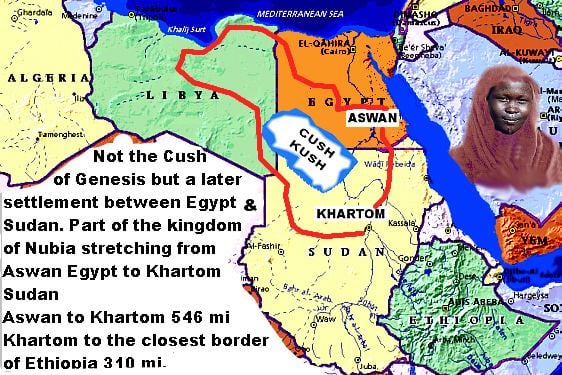
Hebrew Bible
According to Genesis, Cush's other sons were Seba, Havilah, Sabtah, Raamah, and Sabtecah.
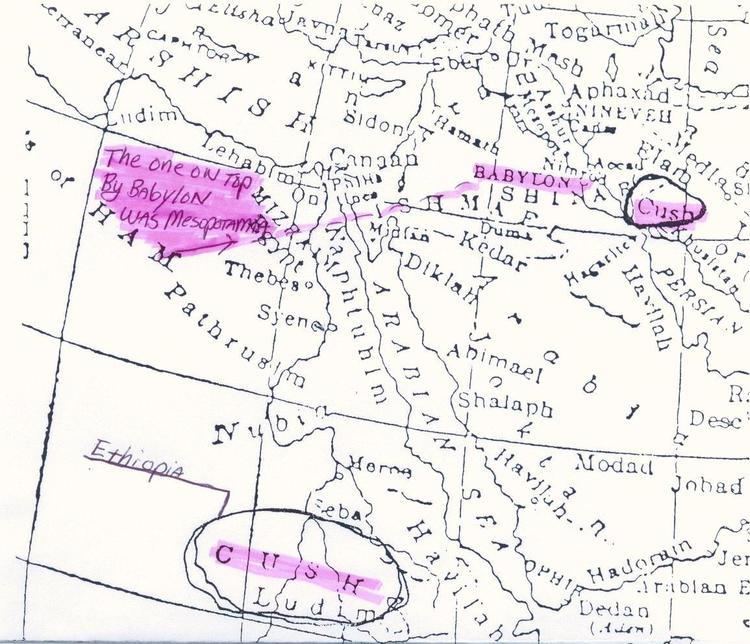
The Book of Numbers 12:1 calls the wife of Moses "a Cushite woman", whereas Moses's wife Zipporah is usually described as hailing from Midian. Ezekiel the Tragedian's Exagoge 60-65 (fragments reproduced in Eusebius) has Zipporah describe herself as a stranger in Midian, and proceeds to describe the inhabitants of her ancestral lands in North Africa:

"Stranger, this land is called Libya. It is inhabited by tribes of various peoples, Ethiopians, dark men. One man is the ruler of the land: he is both king and general. He rules the state, judges the people, and is priest. This man is my father and theirs."
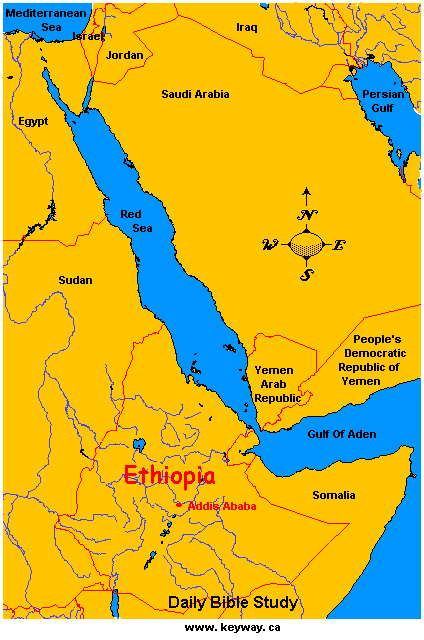
The rhetorical question "Can the Cushite change his skin?" in Jeremiah 13:23 implies brown skin color, of most likely a Nubian people; also, the Septuagint uniformly translates Cush as Αἰθιοπία "Aithiopia."
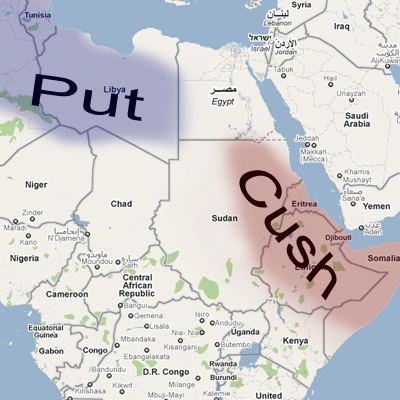
Another person named Cush in the Hebrew Bible is a Benjamite who is mentioned only in Psalm 7, and is believed to be a follower of Saul.
Later identifications
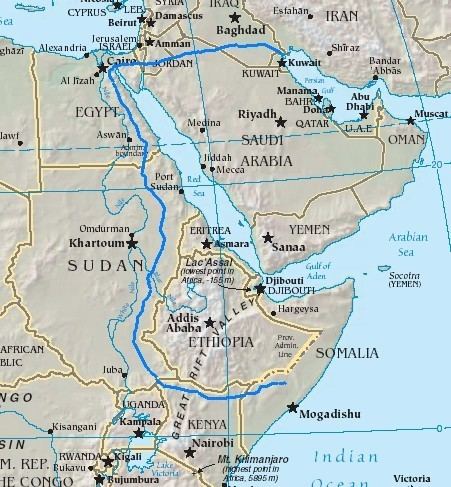
Josephus gives an account of the nation of Cush, son of Ham and grandson of Noah: "For of the four sons of Ham, time has not at all hurt the name of Cush; for the Ethiopians, over whom he reigned, are even at this day, both by themselves and by all men in Asia, called Cushites." (Antiquities of the Jews 1.6).
During the 5th century AD, Syrian writers described the Himyarites of South Arabia as Cushaeans and Ethiopians.

The Persian historian Muhammad ibn Jarir al-Tabari (c. 915) recounts a tradition that the wife of Cush was named Qarnabil, daughter of Batawil, son of Tiras, and that she bore him the "Abyssinians, Sindis and Indians".

The Cushitic-speaking peoples today comprise the Agaw, Oromo, Somali, Afar, and several other tribes, and were considered offspring of Cush in Masudi's Meadows of Gold from 947 AD. The Beja people, who also speak a Cushitic language, have specific genealogical traditions of descent from Cush.
Explorer James Bruce, who visited the Ethiopian Highlands c. 1770, wrote of "a tradition among the Abyssinians, which they say they have had since time immemorial", that in the days after the Deluge, Cush, the son of Ham, traveled with his family up the Nile until they reached the Atbara plain, then still uninhabited, from where they could see the Ethiopian table-land. There they ascended and built Axum, and sometime later returned to the lowland, building Meroe. He also states that European scholars of his own day had summarily rejected this account on grounds of their established theory, that Cush must have arrived in Africa via Arabia and the Bab el Mandab, a strait located between Yemen on the Arabian Peninsula, and Djibouti and Eritrea on the Horn of Africa. Further, the great obelisk of Axum was said to have been erected by Cush in order to mark his allotted territory, and his son Ityopp'is was said to have been buried there, according to the Book of Aksum, which Bruce asserts was revered throughout Abyssinia equally with the Kebre Negest.
Hebrew scholar David M. Goldenberg has suggested that the Hebrew name is derived from Kash, the Egyptian name of Lower Nubia and later of the Nubian kingdom at Napata, known as the Kingdom of Kush. The form Kush appears in Egyptian records as early as the reign of Mentuhotep II (21st century BC), in an inscription detailing his campaigns against the Nubian region. At the time of the compilation of the Hebrew Bible, and throughout classical antiquity, the Nubian kingdom was centered at Meroe in the modern-day nation of Sudan.
Scholars like Johann Michaelis and Rosenmuller have pointed out that the name Cush was applied to tracts of country on both sides of the Red Sea, in the Arabian Peninsula (Yemen) and Northeast Africa.
